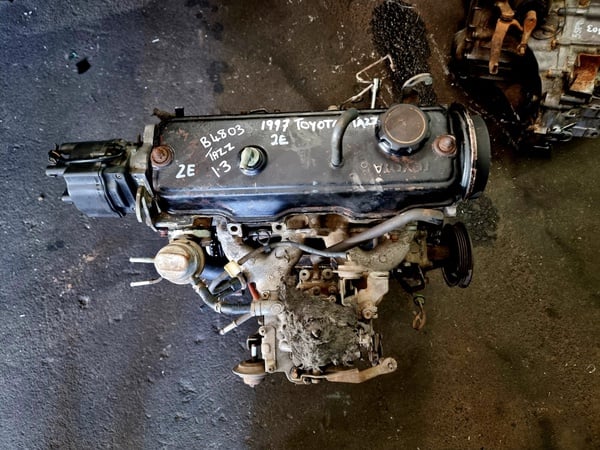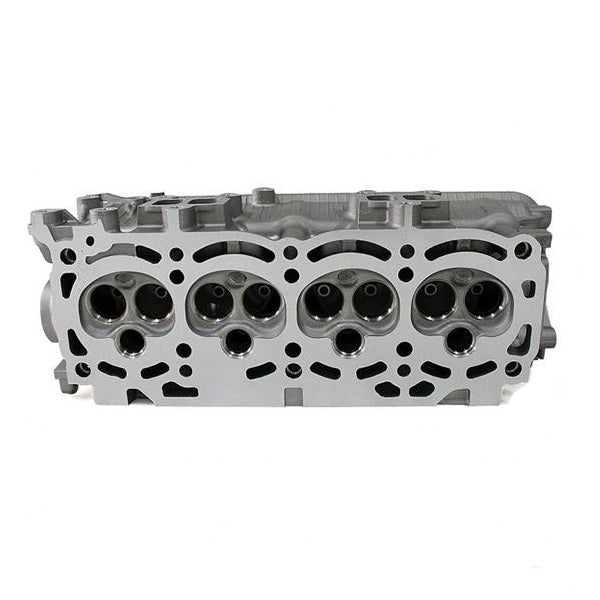Discover the Features and Benefits of the Toyota Tazz for First-Time Buyers
Discover the Features and Benefits of the Toyota Tazz for First-Time Buyers
Blog Article
Discover the Latest Patterns in Engine Modern Technology Via Tazz
In the swiftly developing landscape of vehicle technology, Tazz stands at the leading edge, highlighting substantial innovations in engine systems that focus on both advancement and sustainability. From hybrid engines that optimize fuel efficiency to the emergence of hydrogen gas cells, the patterns shaping modern powertrains are not just improving efficiency however likewise dealing with critical ecological difficulties.
Hybrid Engine Innovations
Crossbreed engine advancements represent a crucial shift in automobile technology, integrating the benefits of inner combustion engines with electrical propulsion systems. This combination not only improves fuel efficiency yet likewise reduces discharges, meeting significantly stringent environmental regulations. By making use of both energy resources, hybrid engines can enhance efficiency, delivering power when needed while saving gas during much less requiring motoring problems.
Recent improvements in hybrid modern technology consist of improvements in battery effectiveness and regenerative stopping systems. These developments enable greater energy recuperation throughout deceleration, which can be redirected to help in velocity or power auxiliary systems. Manufacturers are concentrating on lightweight materials and portable styles to maximize the effectiveness of crossbreed powertrains.
The advancement of plug-in hybrids has likewise expanded the marketplace, enabling chauffeurs to charge their vehicles utilizing basic electrical outlets. This feature often enables considerable all-electric variety, further lowering dependancy on conventional gas. tazz. As the automobile sector proceeds to develop, hybrid engine modern technologies are anticipated to play an essential function in linking the void between conventional cars and fully electrical models, supplying a transitional service that deals with diverse customer requirements and preferences
Advancements in Electric Powertrains
The auto landscape is swiftly evolving, with electrical powertrains arising as a leading force in sustainable transportation. Developments in electric automobile (EV) modern technology are significantly enhancing efficiency, efficiency, and user experience. Key technologies include renovations in battery chemistry, which have actually raised energy density, minimized charging times, and prolonged total battery life.
Solid-state batteries, as an example, guarantee to transform the marketplace by supplying greater safety and efficiency contrasted to traditional lithium-ion cells. Developments in regenerative braking systems are enabling cars to recover energy during slowdown, contributing to total effectiveness.
In enhancement to battery technology, electrical motor styles are ending up being much more sophisticated. Developments such as integrated electric motors and progressed thermal administration systems are aiding to optimize power delivery and minimize weight, ultimately boosting lorry characteristics.

Collectively, these advancements underscore the commitment to change towards cleaner, more effective transportation options, placing electrical powertrains at the center of auto technology.
The Increase of Hydrogen Fuel Cells
Progressively, hydrogen fuel cells are acquiring traction as a practical choice to conventional inner burning engines and battery electric automobiles. This innovation utilizes the chemical power stored in hydrogen, transforming it into electricity via an electrochemical response with oxygen. The main result of this process is water, making hydrogen gas cells an ecologically pleasant alternative with no exhausts at the tailpipe.

Automakers are progressively investing in hydrogen gas cell modern technology, recognizing its capacity for long-range applications and fast refueling capabilities that equal conventional fuels. In addition, industries such as durable transport and public transportation are specifically fit for hydrogen gas cells, where battery electric remedies may drop short as a result of weight and array limitations.
As research and financial investment continue to increase, hydrogen gas cells are poised to play a considerable function in the future my blog landscape of clean transportation and power solutions.
Enhancements in Internal Combustion Engines
Advancements in interior burning engine (ICE) innovation are transforming conventional automobiles to satisfy contemporary environmental requirements and performance expectations. Among the most considerable enhancements involves the integration of advanced gas shot systems. These systems enhance the air-fuel blend, enhancing combustion efficiency and resulting in lowered exhausts. Straight fuel injection, for example, enables far better atomization of gas, resulting in more full burning and improved power output.
Additionally, turbocharging has actually gotten prestige, enabling smaller engines to supply higher efficiency without the weight of larger engines - tazz. This technology not just boosts performance but additionally adds to decrease fuel intake. Variable valve timing systems are additionally being refined, making it possible for engines to adapt to different driving conditions for enhanced Click Here torque and responsiveness
Moreover, making use of light-weight materials in engine building and construction is ending up being basic, additional improving fuel efficiency by lowering overall vehicle weight. Engine control systems (ECUs) are increasingly innovative, making it possible for real-time modifications that maximize efficiency and discharges.
These improvements jointly signify an essential change in ICE modern technology, lining up with international sustainability goals while still supplying the performance chauffeurs get out of their lorries. As the market evolves, these renovations remain to shape the future of standard vehicle engineering.
Future Fads in Engine Performance
Considerable advancements in engine effectiveness are anticipated as suppliers concentrate on integrating advanced modern technologies to meet stringent ecological guidelines and customer needs. The shift in the direction of electrification, crossbreed systems, and different gas is improving the auto landscape, driving developments that improve gas economic climate and lower emissions.
Among the essential trends is the execution of innovative materials and producing strategies. Light-weight composites and high-strength alloys add to reduced car weight, hence improving overall efficiency. In addition, the adoption of turbocharging and variable valve timing innovations permits boosted power outcome from smaller engines, additionally boosting fuel economy.

Final Thought
Finally, the expedition of engine modern technology exposes significant advancements that focus on sustainability and effectiveness. Advancements in crossbreed engine systems, electric powertrains, and hydrogen fuel cells show a commitment to decreasing exhausts while enhancing performance. Renovations in internal combustion engines and a focus on light-weight materials contribute to total engine effectiveness. As the vehicle sector proceeds to develop, these patterns will play a vital duty in forming a cleaner and more lasting future for transport.
From crossbreed engines that maximize gas performance to the emergence of hydrogen fuel cells, the patterns shaping contemporary powertrains are not just boosting efficiency yet also dealing with vital ecological difficulties.Crossbreed engine advancements represent a critical shift in automobile innovation, integrating the benefits of internal combustion engines with electric propulsion systems.Additionally, turbocharging has actually obtained prestige, permitting smaller sized engines to provide higher performance without the weight of larger engines. Additionally, the fostering of turbocharging and variable shutoff timing innovations enables for enhanced power output from smaller sized engines, better boosting gas economic climate.
Enhancements in internal burning engines and an emphasis on lightweight materials add to general engine effectiveness.
Report this page